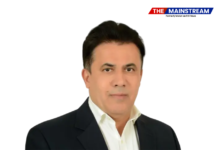SHANGHAI, Sept. 30, 2024 /PRNewswire/: Fourier, the Shanghai-based robotics company, announces the launch of GR-2, the latest addition to its GRx humanoid robot series. With remarkable upgrades across hardware, design, and software, GR-2 marks a new milestone in the field of humanoid robotics.
Next-Level Hardware Design
GR-2 builds upon the success of its predecessor, GR-1 — the world’s first mass-produced humanoid robot. Standing at 175 cm and weighing 63 kg, GR-2 offers 53 degrees of freedom and a single-arm load capacity of 3 kg, enabling it to tackle more complex tasks.
The new robot features a detachable battery with the capacity doubled, extending runtime by an hour. This upgrade boosts GR-2’s adaptability, making it capable of handling a broader range of challenges, such as long-distance walking.
Engineering Breakthroughs for Developers
GR-2 features integrated cabling design for power and communication transmission, allowing concealed wires and more compact packaging. The efficient layout optimizes space for easier modularization and greater adaptiveness for application-oriented customization.
To simplify the control system and reduce maintenance, Fourier redesigned GR-2’s joint configuration, shifting from a parallel to a serial structure. It improves debugging, lowers manufacturing costs, and enhances the robot’s ability to rapidly learn and transition from AI simulation to real-world applications.
12-Degrees-of-Freedom Dexterous Hands: Precision in Motion
GR-2 introduces 12-DoF dexterous hands—double the dexterity of previous models. Designed to mirror the flexibility of human physiology, these hands adapt seamlessly to complex tasks with greater precision.
Equipped with six array-type tactile sensors, GR-2 can sense force, identify object shapes and materials, and adjust its grip in real time for optimal manipulation in dynamic settings.
Supporting multiple upper-limb teaching modes—VR remote control, lead-through programming, and direct command—GR-2 can record a comprehensive set of operational data, from motion paths to tactile responses. The robust data collection expects to bridge the gap between virtual models and real-world applications, pushing the boundaries of robot training and deployment further.
FSA 2.0: Powering Dynamic Mobility
Fourier breaks new ground in humanoid robotics by incorporating human-like motion into GR-2’s design. To optimize its movement, the company developed seven distinct FSA actuators for GR-2, each tailored to meet the specific torque demands of every joint.
With peak torques exceeding 380 N.m, FSA 2.0 boosts GR-2’s agility and dynamic capabilities. The dual-encoder system doubles control accuracy, ensuring precise movements even in high-pressure environments. Designed for both speed and precision, FSA 2.0 empowers GR-2 to navigate complex tasks with greater flexibility.
Optimized Tools for Innovative Development
Fourier prioritizes the developer’s experience. The company optimized GR-2’s development platform by introducing a new software development kit compatible with mainstream programming languages such as ROS. Developers can have easy access to a robust suite of pre-optimized modules for machine vision, path planning, and force feedback control through intuitive APIs.
Supporting frameworks such as NVIDIA Isaac Lab and Mujoco, the new platform empowers developers to focus on innovation, streamlining their workflow, and elevating the robotics development experience.
“GR-2 is a big step into the future of humanoid robotics,” said Alex Gu, CEO of Fourier. “We’re passionate about building the most intuitive embodied agent for AI, allowing it to engage with the physical world in ways like never before. Fourier is excited to have developers, researchers, and enterprises join us on this incredible journey.”
The Fourier GRx series sets new standards in humanoid robotics with its emphasis on AI integration. In view of the future evolution of humanoid robot entities, the company outlines six key areas for development—locomotion, manipulation, cognition, bionic design, user experience, and commercial viability. The launch of GR-2 marks a new step toward future breakthroughs in human-robot collaboration.
Do Follow: CIO News LinkedIn Account | CIO News Facebook | CIO News Youtube | CIO News Twitter
About us:
CIO News is the premier platform dedicated to delivering the latest news, updates, and insights from the CIO industry. As a trusted source in the technology and IT sector, we provide a comprehensive resource for executives and professionals seeking to stay informed and ahead of the curve. With a focus on cutting-edge developments and trends, CIO News serves as your go-to destination for staying abreast of the rapidly evolving landscape of technology and IT. Founded in June 2020, CIO News has rapidly evolved with ambitious growth plans to expand globally, targeting markets in the Middle East & Africa, ASEAN, USA, and the UK.
CIO News is a proprietary of Mercadeo Multiventures Pvt Ltd.






